We went digging for clams in black mud in this Chinese city where Putien restaurants get their fresh produce
Did you know that Putian in Fujian, China, where Putien restaurants get their produce, has sweet, plump razor clams; juicy, golden loquats; yellow croaker fish farmed in pristine waters; and sea salt harvested according to traditional methods? Neither did we, until we got there.
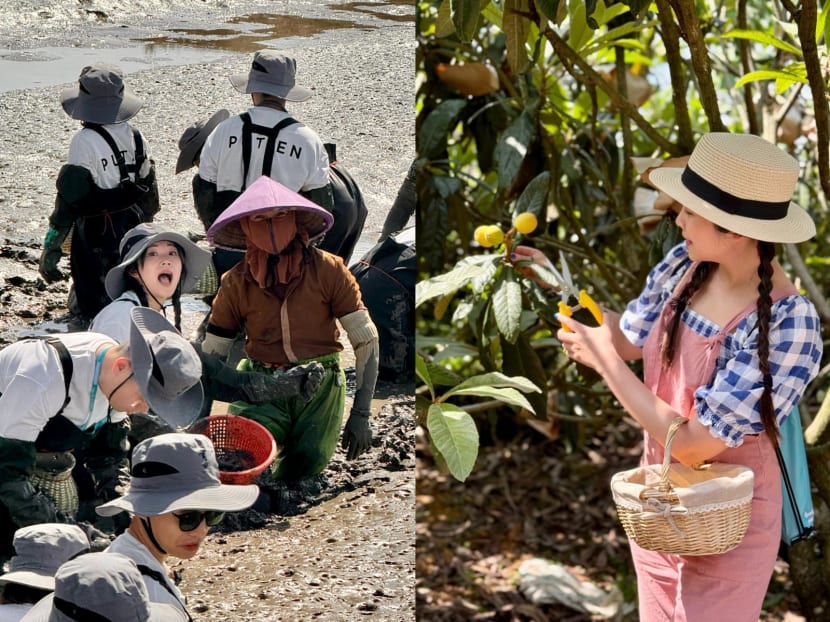
Harvesting clams and loquats in Putian, China. (Photos: CNA/May Seah)

This audio is generated by an AI tool.
Much has been said about the aphrodisiac properties of molluscs like clams, oysters and mussels. But when you are personally attempting to harvest a clam from deep within a bank of black mud, you can only surmise that few things are more unsexy.
When Putien, the restaurant known for its seafood-focused Hinghwa cuisine and comforting lor mee, invited me to visit Putian, an actual place in China, to try my hand at harvesting some of the fresh produce that goes into their dishes, I sincerely thought it would be a Li Ziqi-core experience.
Loquat-picking at a loquat orchard? Idyllic and lovely. Visiting a salt farm? Dramatically beautiful, no doubt. Clam fishing? Surely an easygoing activity – clams live on sandy beaches, right?
Well, maybe ordinary, standard-issue clams – namby-pamby clams unsuited for the rage of war – do. Not the class of superclams that go into Putien dishes.
THE CLAM BEFORE THE STORM
To get to the clams, we had to drive an hour out from Putian city, to the village of Duotou. Getting there involved traversing unpaved country roads so rustic, our vehicle got stuck. But, we were heading towards literal buried treasure. For 600 years, this village has been cultivating Chinese razor clams in its mineral-rich, nutrient-dense mudflats.
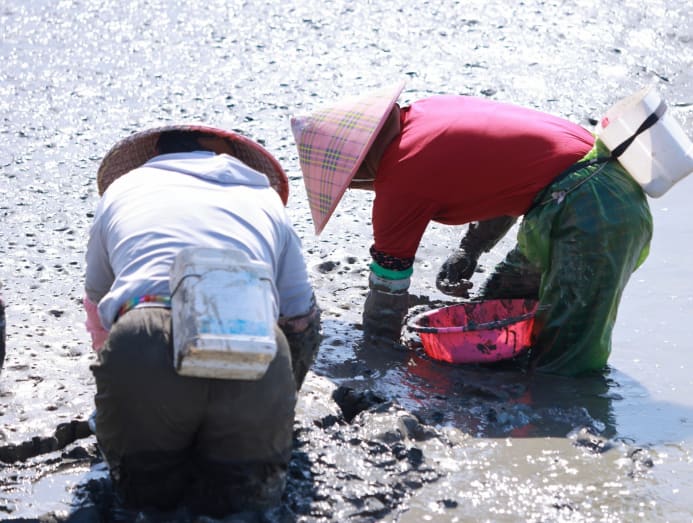
This was not just any mud but black mud – thick, squelchy, viscous, deep, black mud. This meant suiting up in chest-high waterproof waders, oversized rubber gloves, a large hat for protection from the blazing sun and a little basket tied with string around my waist to collect my clam harvest. Outfit-wise, it was more functional than sartorial, but it’s not what you wear; it’s how you wear it.
And then I noticed something quite concerning: People who had descended into the mud ahead of me were getting stuck in it, like flies in hot chocolate.
This was the point where backing out seemed like a good idea, but then I remembered I was paid to be an intrepid journalist, and my editor probably wouldn’t be very happy if I ended this story here and went home.
“People pay money for mud spas,” I told myself as I held my breath and plunged waist-deep into the sludge.

Clam fishing, in theory, is the simplest of tasks. Clams, having no limbs or any apparent means of self-propulsion through their thick, viscous semi-liquid habitat, simply exist, suspended beneath the mud’s surface, waiting to be scooped up.
Unfortunately, I, with my limbs (all four of them), also had no means of self-propulsion, as the mud immediately sucked me in like a spoon into an Oreo McFlurry.
A lovely fisher-auntie tried to show me the ropes, so I put off panicking for a bit and, following her lead, dug my hands into the mud bank. She, of course, came up with fistfuls of clams; I, of course, came up with nothing. I’m not saying her clams were paid actors, but after about five minutes of this recurring pattern and me showing zero aptitude for clam fishing despite it being literally sticking your hand into mud and grabbing clams out of it, she felt sorry for me and dumped all of her bounty into my basket.
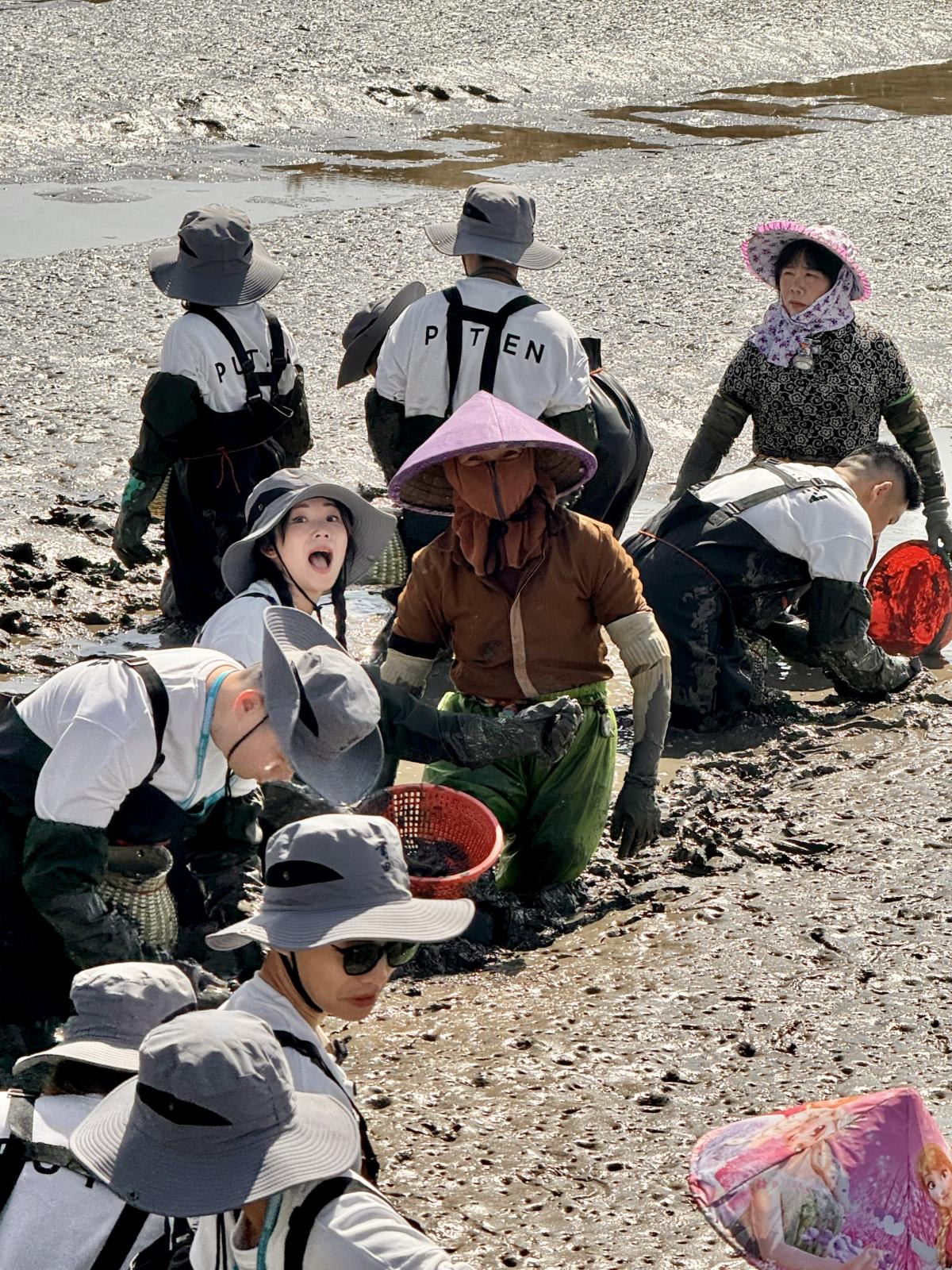
By this time, I was huffing and puffing, while she was a lean, mean, serene, clamming machine. And, I was also stuck. Each time I tried to take a step to keep myself from sinking deeper, the mud grabbed my boot and sucked me further down. So, the nice auntie had to help me yank my legs upwards while I clung onto her for dear life and tried to heave myself back to shore. It took an eternity to wade across the three metres to the solid embankment, and during those long, arduous minutes, the moral of the story was clear: Don’t skip leg day.
Some people were impressed by how I returned with a basket overflowing with clams. But, that’s not all – I had also gotten a free mud spa treatment.
KEEP CLAM AND CARRY ON

From the murky depths, I emerged to glorious delights: A clam feast spread out before us, with rows and rows of shining Duotou clams steamed, baked in salt and even boiled in soup with delicious Hinghwa bee hoon and a glug of yellow wine.
The first taste of the fat, succulent clam plucked from its burnished gold shell yielded the immediate understanding of why it is so unique: Fresh, hot and lightly cooked in the simplest of ways, the Duotou clam’s plump, bouncy flesh has an intense sweetness, balanced with crisp, briny umami.
While sea clams absorb large amounts of water, these clams, which grow for six months in the nutrient-dense black mud, retain intense flavour. From the beginning of April until the end of July is when the Duotou clams are in their sweetest and juiciest season, growing to an average of 6cm long.
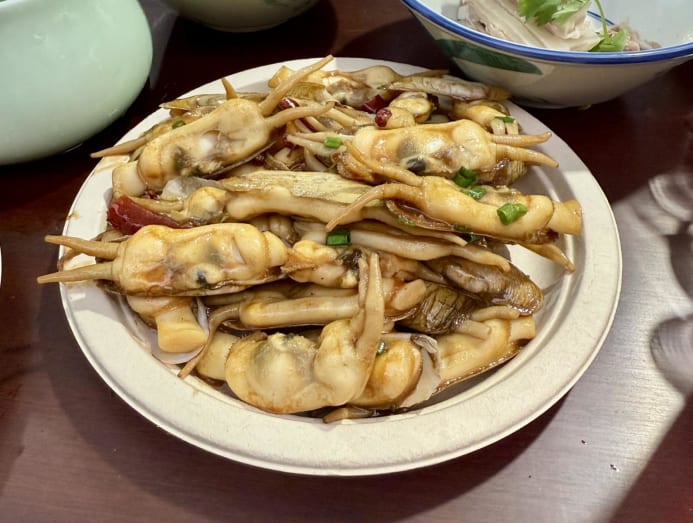
Putien, working with the farmers who own the farms, gets some of the best of the harvest thanks to its founder, Fong Chi Chung, a native of Putian. Clams from Duotou are shipped in their mud to the restaurant’s over 100 outlets in Asia in countries including Singapore, Malaysia, the Philippines and Indonesia, where two to three hours are spent cleaning them before they are cooked.
From now until Aug 15, there’s a special menu of these Duotou clams cooked in eight different ways that bring out the mollusc’s natural sweetness, including salt-baked, stir-fried with ginger and spring onion, deep-fried with salt and pepper, steamed with minced garlic, boiled in soup with winter melon and, my personal favourite, steamed in aged yellow wine. And, if you tell the server the secret code, “Where is cheng liu?”, you also get to order the soupy beehoon dish I had that day on the banks of the mudflats, just like how Putian locals would make it at home.

With clams of this calibre, you’d think Putian, historically known as Hinghwa or Xinghua, in China’s Fujian province, would be known for its fresh produce. It is instead known for two things: The first, as the birthplace of sea goddess Mazu; and the second, for being the counterfeit sneaker capital of the world.
Many globally-known shoe brands had once set up factories here, leading to locals picking up the skills and know-how for manufacturing quality sneakers. These days, it’s said that the “replicas” from Putian are better made and longer-lasting than their name-brand versions. I was not in the market for some “Ouitshka Tigors”, but if I were, I now knew where to get the latest ones.
LOQUAT-IOUS PURSUITS
But, clearly, the gems of Putian lay outside the city centre, and one of the motherlodes was a beautiful loquat orchard.

If you’re like me, you probably think of loquats – if you think of loquats at all – as a sort of made-up fruit: Never seen in real life, and mentioned only in conjunction with Nin Jiom Pei Pa Koa.
Turns out, they aren’t mythical; they aren’t related to kumquats; and they look like little, oval plums with juicy, golden flesh and seeds like soursops.
At the orchards in the town of Shufeng where Putien gets their loquats for desserts like an utterly delicious minty loquat jelly, the fruit trees, whose leaves can also be plucked for tea, have been cultivated for over 600 years. At 370m above sea level, the area enjoys mild temperatures as well as plenty of sun and rain.
Famers limit the number of fruits to three to five per branch, ensuring each fruit develops a deep, honeyed sweetness with a floral fragrance. These are covered in bags to protect them from birds, insects and the elements until they are ready to be harvested in the springtime. It’s said that you should not pick the prettiest fruits as they are never the sweetest, which is advice that applies to loquats and online love scams alike.
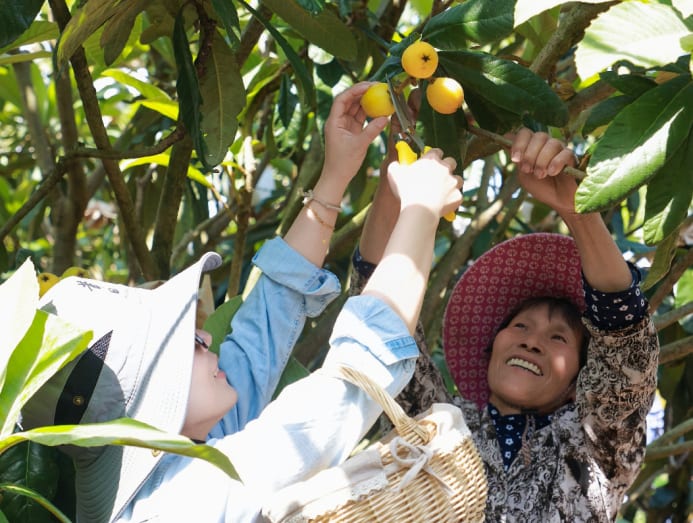
Harvesttime involves a band of sweet little aunties who must put up with visiting journalists attempting to live out their cottagecore fantasies for half an hour. Bored by the lack of efficiency, the aunties eventually grab the shears and briskly snip the loquats off their branches. This is how I ended up, once again, with a full basket of goods that I could pretend to have harvested myself. And, they were most enjoyable: Sweet, sticky, syrupy and succulent.
SALT, SEA, LAND AND SKY
While in Putian, we also took a leisurely boat ride to a place called Cucumber Island, where you do not find any cucumbers but you do find yellow croakers, a delicacy of the area and proudly farmed in the pristine waters here.
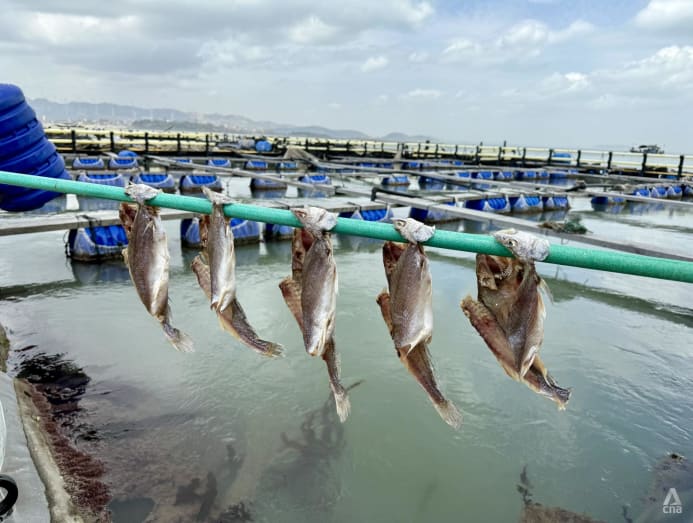
The fish get their name from their golden colour, a result of yellow pigment in their bodies that breaks down under strong UV light. So, they are caught before dawn in darkness, then delivered to Putien restaurants within 24 hours. Fed a diet of small fish and shrimp, they grow at a slower pace and are highly active, so they have leaner and more elongated bodies with firm, springy flesh and a sweetness of flavour.
The clean-tasting fish is delectable whether lightly steamed in soya sauce or fried until crispy outside and soft inside. It’s said that screen siren Lin Ching-hsia, who wasn’t a fan of fish, changed her mind when she tasted the Putian croaker.
Then we visited the origin of another of Putian’s famous exports: Its premium-grade sea salt, harvested from the largest salt field in Fujian province.
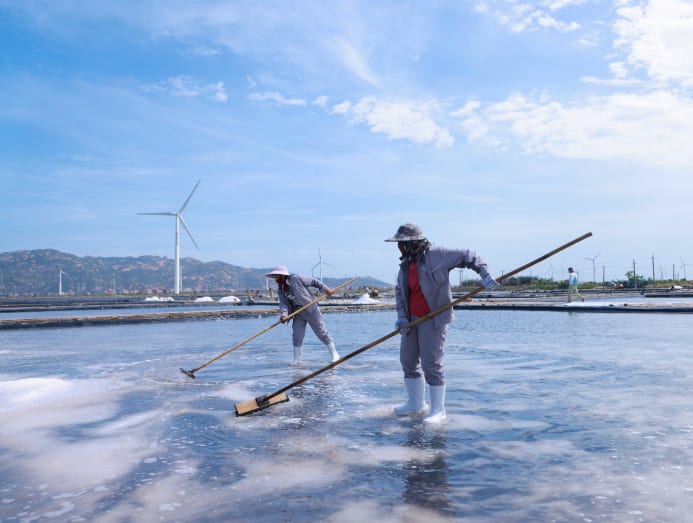
Salt from this part of China has been prized since the Song dynasty, and it is still produced according to ancient methods of sedimentation and evaporation, passed down through the generations.
Because of its location within three bays, conditions are ideal for harvesting mineral-rich, additive-free salt. Seawater is channelled through terraced salt fields so that the salt is purified while retaining its natural crystalline structure and trace minerals, resulting in a flavour much more dimensional than that of regular table salt.
And so, I left Putian saltier than when I had arrived. But I had unearthed so much about fresh produce, beautiful ingredients and what it takes to grow and harvest them – not just clams, fish, fruits and salt, but also through meals in which I got to taste other Fujian treasures like bamboo shoots, Nanri abalone, red mushrooms, oysters and even sea worms, a local speciality eaten jellied, which you can also find on the menu at Putien, if you’re feeling a bit brave (they’re kind of like a tasteless but chewy vegetable, really – not very offensive at all).
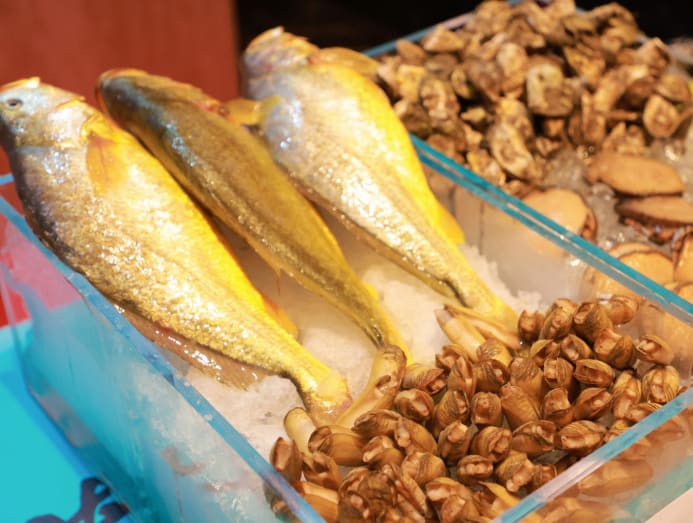
It really drove home the fact that even here in Singapore, our understanding of Chinese food barely scrapes the surface of all there is to discover.
Like clams, the best things, I guess, are found if you’re willing to dig for them.
CNA Lifestyle was in Putian at the invitation of Putien.





